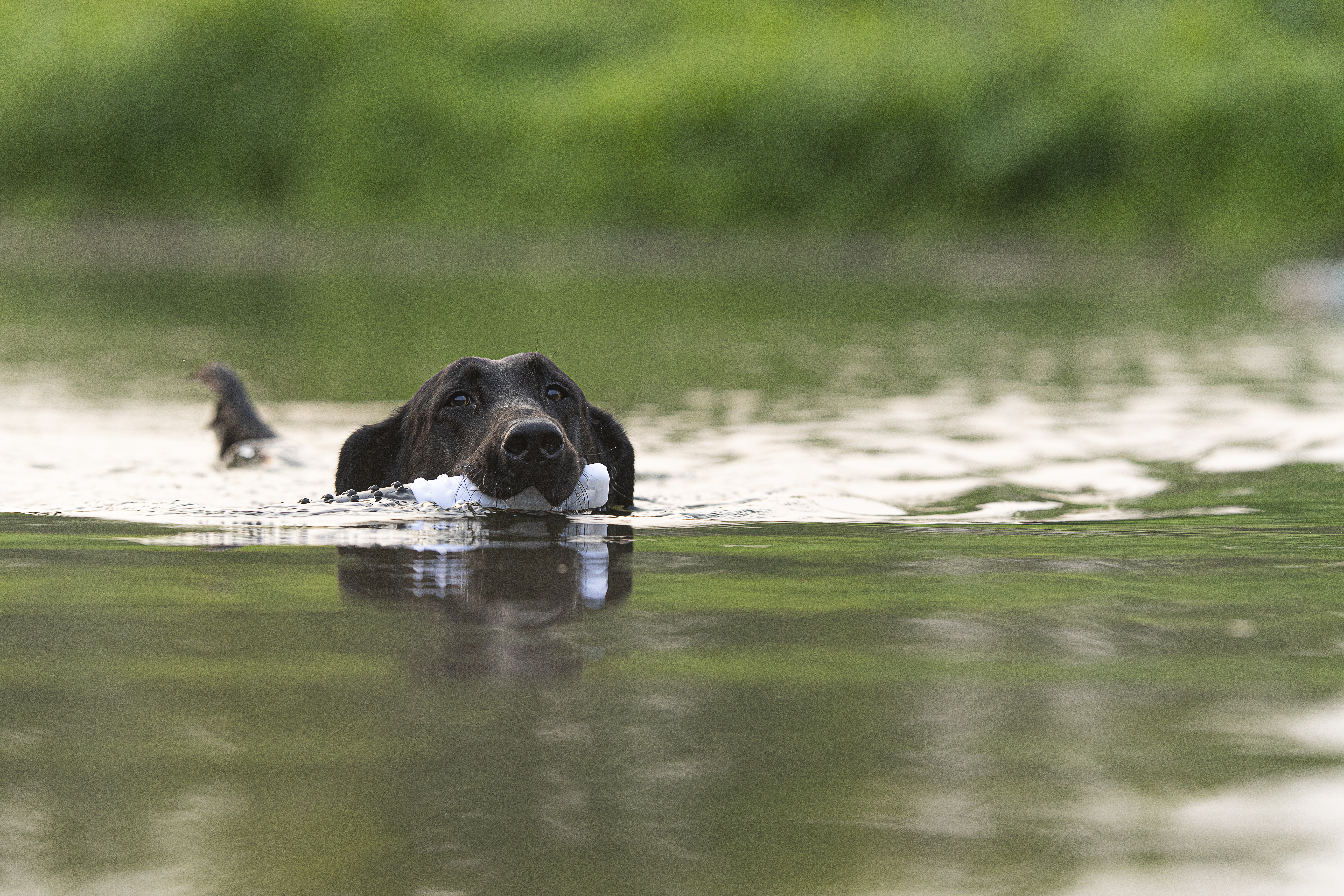
May 24, 2022
Canine Corner: Tips to improve summertime marking drills
By Charlie Jurney
Presented by SportDOG® Brand
(Originally published in the Summer 2022 issue of California Waterfowl.)
A dog that’s a good marker watches the bird fall all the way to the ground or water and stays focused on that spot until he’s sent for the retrieve. Photo by Lee Thomas Kjos of Kjos Outdoors
Hunting season is here! Well, OK, not quite. But summer definitely qualifies as the pre-season for retriever owners. Lessons learned now are going to carry right over into the real season. Summer is the ideal time to brush up on marked-retrieve drills so your dog performs better than ever this fall. Whether you’re training on land or water (and make sure you’re in or around water on hot days!), there’s no such thing as too much work on marking.
A dog that’s a good marker watches the bird fall all the way to the ground or water and stays focused on that spot until he’s sent for the retrieve. Here are several tips to reinforce good marking habits and build confidence that will pay off in the duck blind.
-
You need a thrower. Make no mistake; the only way to really upgrade your retriever’s performance and versatility is to get a helper. That means recruiting a reliable assistant who’s willing to take directions and throw bumpers and birds for you at different angles and distances. No one has ever developed a great retriever by standing in one spot and chucking 40-yard bumpers over and over.
Regardless of the distance you’re working at, make sure your thrower is armed with plenty of bumpers. That way if your dog is having trouble with a retrieve and gets hopelessly outside the area of the fall to the point where you don’t think he’s going to find the bird on his own, you can signal your helper to holler for the dog’s attention and toss another bumper to the same area, thus guaranteeing success.
Also, if your dog requires help on a particular retrieve, go ahead and have your thrower repeat the exact throw again, and keep doing it until he marks it and retrieves it like an ace.
-
Good visibility equals improved focus. Always make sure your dog has an unobstructed view of the thrower and the object being thrown. You’re not trying to trick your dog or set him up to fail; the goal is to give him the best chance to succeed. Once the bird or bumper is down, don’t be in a hurry to send the dog; let him lock in and really focus on the spot of the fall before you send him.
You can mix in some steadiness reinforcement at the same time. To do this, vary the amount of time between the throw and the moment you send your dog. If he breaks (takes off before you send him), call the dog back and have your helper pick up the bird. Your dog should never get rewarded (by getting the retrieve) if he breaks. Breaking is a problem that will only get worse if it goes uncorrected.
-
Change things up constantly. Ideally, you should find several different locations for training. That way you can constantly create marking challenges that look different, whether it’s because of varying cover, distances or angles.
I understand that not everyone has the luxury of countless acres or properties to train on. So, if you’re a limited in the amount of ground you have to train on, at the very least, make sure you don’t run from the same spot over and over.
A dog becomes a good marker by learning to interpret depth (distance) and angles of throws. These skills can only get better through repetition and at the same time learning that not every throw is the same.
Give your thrower clear instructions on the angle you want him to throw at. You don’t want your dog to learn that every single throw is an exact 25 yards flat out from the thrower. Make sure some throws are angled almost straight back, some slightly angled back, some flat, some slightly angled toward you and some almost directly toward you.
-
Don’t get obsessed with multiple retrieves. I can’t emphasize this enough: Remember, your job is not to challenge or trick your dog into failing. First and foremost, you’re a teacher.
Single marks are the primary teaching tool, and giving your dog countless repetitions on singles is what helps him concentrate and focus, which in turn builds his confidence. Get good at the most challenging singles, and the step up to doubles and triples comes quite naturally. But when you jump ahead to doubles and triples without first building a good foundation, you create more chances to fail, and that detracts from confidence.
I would rather go out for a training session and have my helper throw six different single marks at varying distances and angles and have my dog nail every one of them, than have him run a sloppy triple just for the sake of saying that he ran a triple.
The Pre-Season Matters! A commitment to marking drills and the necessary repetition of those drills during the pre-season might not be as exciting as the actual hunting season, but that doesn’t mean it isn’t important. It’s vitally important that you put in the work now so that when it’s game time for real, you know you’re heading out with a first-string player.


